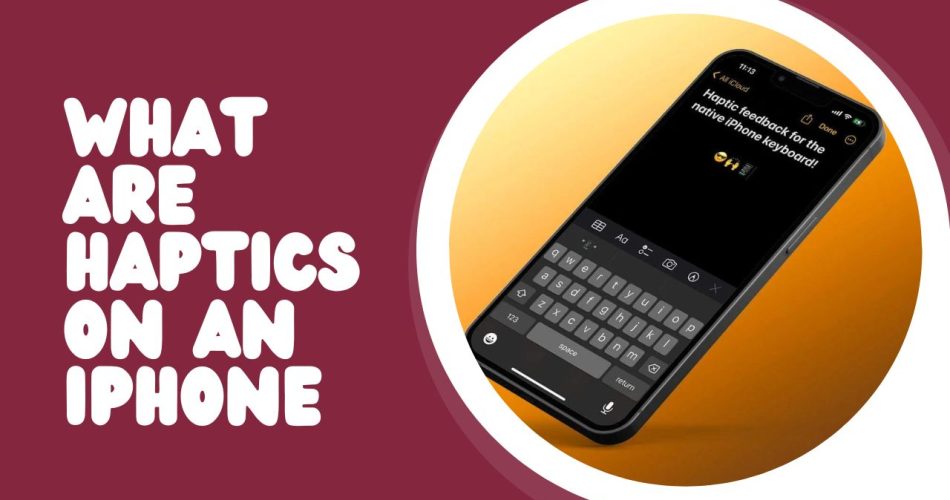Apple’s proprietary Taptic Engine has revolutionized haptic feedback on iPhones.
The linear motions produced by the Taptic Engine allow for nuanced and precise sensations that go beyond traditional vibration motors.
This advanced haptics technology is reshaping how iPhone users interact with their devices by adding the sense of touch to the experience.
Haptics provides immersion, expresses meaning, aids accessibility, and enhances the overall tactile experience. Apple continues to innovate in this space to set the new standard for intuitive user interfaces.
How the Taptic Engine Works
The Taptic Engine uses a linear resonant actuator to generate haptic feedback. It consists of a small internal mass attached to a shaft. An electromagnet moves this internal mass back and forth to produce vibrations. Unlike traditional vibration motors that spin, the Taptic Engine’s linear motion allows for precise control over the haptics.
Apple custom-designed the Taptic Engine to provide a wider range of haptic feedback compared to traditional vibration motors. It can vary the intensity, duration, and type of haptic feedback, allowing for nuanced sensations. The Taptic Engine made its debut in the iPhone 7 series and has been improved upon in later iPhone models.
Types of Haptic Feedback on iPhones
There are two main types of haptic feedback on iPhones powered by the Taptic Engine:
Tactile feedback: Provides sensations of textures, taps, clicks etc. when interacting with the touchscreen. For example, clicks when typing on the keyboard or scrolling through menus.
Force feedback: Simulates forces and motion, like the feeling of objects moving under your finger. For example, inertia scrolling where the screen continues moving after you lift your finger, just like a physical object would.
In addition, system haptics on iPhones allow customizing vibrations for alerts, notifications, ringtones etc.
Benefits of Haptics on iPhones
Haptics on iPhones provide the following key benefits:
- Enhanced realism: The haptic feedback makes interactions seem more real, similar to using physical buttons and interfaces. This leads to increased user engagement.
- Accessibility: For users with visual impairments, haptics provides essential feedback for interacting with the touchscreen. It assists navigation and input.
- Alerts and notifications: Haptics allows users to perceive alerts and notifications even if the phone is on silent mode. This prevents missing important alerts.
- Immersive experiences: Apps and games can provide a wider range of sensations through customized haptic patterns leading to more immersion. For example, haptics takes VR/AR apps to the next level.
- Intuitive interfaces: Thoughtfully designed haptics guides users, allowing them to intuitively understand meanings and relationships. This improves usability.
- Brand identity: The precise haptic feedback provides a unique experience that users associate with Apple products. It has become an integral part of the Apple ecosystem.
Implementation of Haptics on iPhones
Apple provides APIs and frameworks for developers to implement haptic feedback in their apps and interact with the Taptic Engine:
UIKit framework – Simple haptic feedback for basic interactions like selections, impacts etc. Easy to implement.
Core Haptics framework – Low-level control over creating custom haptic patterns by precisely timing haptic events. Advanced features for complex use cases.
Apps need to request access to use haptics by adding usage descriptions. The system will prompt users the first time an app plays haptics for permission. Apps should thoughtfully use haptics to enhance meaningful interactions and avoid overusing it. Careful user testing is required for good results.
Final Thoughts
Haptics on iPhones powered by the custom-designed Taptic Engine provide tactile feedback through vibrations and motions. This enhances realism, accessibility, and user experiences across the iOS ecosystem. Haptics development will be a key focus area for Apple as interactions increasingly rely on touch in the future with technologies like VR/AR.

